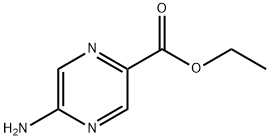In a chemistry lab, students are performing experiments to determine the polarity of various compounds, leading to a discussion about the polarity of HCN.
Derivative Questions:
1.What determines the polarity of a compound?
2.Are there any other compounds similar to HCN in terms of polarity?
Is HCN polar or nonpolar?
Related Products More >
-
- 108-80-5
- USD 50.0000
- 50kg
-
- 108-78-1
- USD 4.5000
- 25kg
-
- 4559-86-8
- USD 750.0000
- 170kg
-
- 77182-82-2
- equest For Quotation
-
- 70131-50-9
- equest For Quotation



 沪ICP备2021018848号-5
沪ICP备2021018848号-5

Answer: HCN (hydrogen cyanide) is a polar compound. This is because the electronegativity difference between the hydrogen (H) atom and the nitrogen (N) atom in the H-C≡N bond is significant. Nitrogen is more electronegative than hydrogen, which means that it attracts the shared electrons in the bond more strongly. This results in an uneven distribution of charge, with a partial negative charge (δ-) on the nitrogen atom and a partial positive charge (δ+) on the hydrogen atom. Therefore, HCN has a dipole moment and is classified as a polar compound.
Derivative Question 1: What determines the polarity of a compound?
Answer: The polarity of a compound is determined by the electronegativity difference between the atoms in the compound. If the electronegativity difference is significant, the compound will be polar, with an uneven distribution of charge. If the electronegativity difference is small or nonexistent, the compound will be nonpolar, with a uniform distribution of charge. Additionally, the shape of the molecule can also affect its polarity. For example, if a polar bond is present in a molecule but the overall shape of the molecule is symmetrical, the dipoles may cancel each other out, resulting in a nonpolar molecule.
Derivative Question 2: Are there any other compounds similar to HCN in terms of polarity?
Answer: Yes, there are several compounds that are similar to HCN in terms of polarity. These compounds typically have a significant electronegativity difference between the atoms in the compound, resulting in an uneven distribution of charge. For example, compounds like HF (hydrogen fluoride), HCl (hydrogen chloride), and HBr (hydrogen bromide) are all polar due to the significant electronegativity difference between the hydrogen atom and the halogen atom. Similarly, compounds like CO (carbon monoxide) and NO (nitric oxide) are also polar due to the electronegativity difference between the carbon or nitrogen atom and the oxygen atom.
Precautions and Considerations:
When determining the polarity of a compound, it is important to consider both the electronegativity difference between the atoms and the overall shape of the molecule. Additionally, it is important to note that polarity is a relative term, and some compounds may be more polar than others. Therefore, it is important to use appropriate experimental methods and techniques to accurately measure the polarity of a compound. Finally, it is important to be aware of the potential hazards associated with handling and working with polar compounds, such as HCN, and to take appropriate safety precautions.
In an HCN molecule, the electronegativity of carbon (C) is 2.55, hydrogen (H) is 2.20, and nitrogen (N) is 3.04. There is a significant electronegativity difference between carbon and nitrogen. The nitrogen atom, being more electronegative, attracts the shared electron pair in the C≡N triple bond towards itself, creating a partial negative charge (δ⁻) on the nitrogen atom and a partial positive charge (δ⁺) on the carbon atom. Although the electronegativity difference between H and C is relatively small, the overall molecular geometry is linear with the polar C≡N bond. This results in a net dipole moment in the molecule, with the direction of the dipole moment from the hydrogen end towards the nitrogen end. Therefore, due to the presence of this net dipole moment, HCN is a polar molecule.